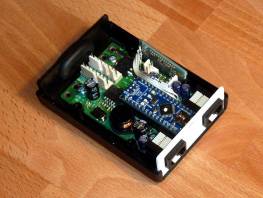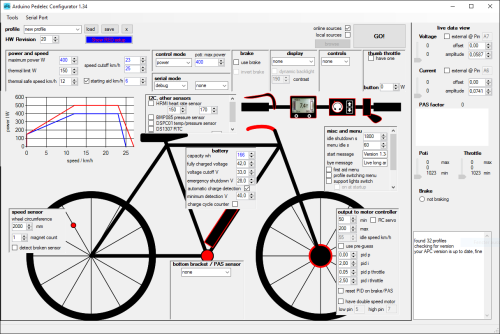rowbiker said:
While it makes all kinds of sense to use an existing lighting circuit with its already (usually) lower voltage, my main concern is that it might not work for a lot of folks. I have a history of riding a lot of non-assisted vehicles, so over the years I've developed a very portable lighting system that's based on me (helmet lights, etc.), not the bike I happen to be riding. Since the solution you're designing here is very vehicle based, and every one of them will have a traction battery, I think the "independent power supply" you mention above is a great idea. This is supported by the fact that you can now typically get these little DC-to-DC converters for under $10. My main reason for getting the power from the CA is to make the wiring as simple as possible, but as you said, NOT at the cost of blowing up parts of the CA. And yes, diagrams are good!
If it weren't for the vulnerability of the CA's regulator, I really really would prefer to just use it for the power; it would make things easier because I could even make it so the Nano board would install right inside the CA casing, too, so no new housing would be required.
I just don't know exactly how much current is available from it at my full charge (57.7v), and then exactly how much current the things already running from it take (the CA itself, the two COT throttle units, the TDCM BB sensor; I think that's all right now), in addition to the listed 19mA the Nano could take (not counting any additional circuitry I end up having to put on it for I/O buffering/etc).
I tried for some time to find an actual specification for max current on the CA's 5v / 10v outputs, but I could not. The only info I can find are notes (including within the manual) that state it's best to stay below 60v max or 52v nominal packs if using a torque sensor powered by the CA itself, and that those sensor can draw as much as 20mA. Well, if 20mA from teh torque sensor is enough to bring the CA down where it could be damaged above 60v, what happens if you double that current draw with a Nano running at full power? Since the CA3 can normally handle 150v without the load of the TS, and it's down to 60v (less than half!) with one, then I don't even know that it would survive the load of the TS plus Nano with a
12v battery system, which is about the minimum (maybe below) to properly run the CA and let it save data on shutdown.

I've been poking around the internet for an hour now, and I actually can't even *find* a DC-DC that converts from around at least 30-100vdc (so that it could easily be used for others with a wide variety of battery packs) to 5vdc (or some range thereabouts). I know they're out there, I have seen them a lot...but I can't find one now that I want to actually order one. I can find thousands of things with 5vdc out, but none of them go higher than about 40vdc.
I know that I can use an LM317 with some big resistors on the input, and a 7805 on that, just like many controllers do...but it's inelegant and wasteful of power and gets pretty hot in a small enclosed space. And I'd have to build it "deadbug" style, or have PCBs made.
I found a few DIY projects with gerbers, parts lists, schematic, that goes from 60vdc in to 5vdc out, so it would work for me, barely any margin, but I'd have to locate all the parts and build it (including SMD stuff that I would probably not be able to correctly solder), after having the PCB made. Not an option for most people (even those willing to solder a few wires from a Nano to their CA), and I wouldn't be able to make them for other people.
https://www.electronics-lab.com/project/60v-5v-dc-dc-step-converter-using-lmr16030/
https://www.electronics-lab.com/project/60v-input-5v-3a-output-dc-dc-converter-industrial-automotive/
https://www.electronics-lab.com/project/60v-to-5v-3-5a-buck-converter-with-usb-output/
I"m still looking around...but the search functions of the cheap and/or quick-to-get sites (amazon, aliexpress, etc) suck and can't find their own home page much less anything useful

so I've been using google to search them instead, with just about zero luck. Normally I'm really really good at finding stuff in the first few hits, but not today.
Of course, there are quite a few AC adapters for USB output that I've run across that happen to run on my battery voltage range...but they don't work on much lower than around 50v input, sometimes 45v, not usually 30-40v, which means they aren't useful for anyone else that wants to run these projects (though I guess they could just run them off the CA power, as their battery voltage isn't high enough to present a risk...I'd rather be able to provide a complete open-source documented project they can just get the linked parts of and program and wire in and go.

).
Well, enough griping, I'll go poke around some more for a DC-DC that will do it.




